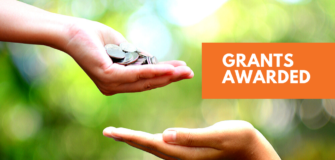Fundraising 101
Share

The early days of an appointment to a third sector board can be confronting and challenging, particularly when you realise that as a board member you have responsibility for fundraising. It’s likely you will be expected to prioritise which fundraising initiatives should be implemented. A poor decision can result
in programs being cut and, in a worst case scenario, jeopardise the organisation’s future.
The good news is there are some basic rules for successful fundraising. Being aware of these rules will help you excel as a board member while saving your organisation from expensive mistakes.
THE KEY RULES FOR SUCCESSFUL FUNDRAISING
There are no quick wins
Lessons learned from the Global Financial Crisis (GFC) can be applied to fundraising. Successful fundraising relies on solid planning and it is long term in nature.
Strong relationships are critical
Investment in donor relationships is vital. Communicate, educate, nurture and thank – don’t just continually ask for money. Those organisations that retain their donors through the GFC will be those who invested in long-term relationships.
So you have accepted that you need to take a strategic, long-term approach to fundraising and you need to invest in relationships. What are the specific activities that will generate results?
Successful, professional fundraisers tend to focus on three key fundraising activities that are inter-related and form the basis of most sound not-for-profit fundraising strategies.
1. DIRECT MAIL (BUDGET FUNDRAISING)
Direct Mail seeks to secure small donations from a large volume of donors. For many organisations this becomes the lifeblood of funding because with an established group of donors it provides a predictable and sustainable source of income, that can be budgeted.
A good program will balance strong emotive appeal ‘asks’ with informative newsletters that thank donors for their support and show them what their support has achieved. Most established programs will have between four and nine campaigns a year.
The appeals will focus on funding requirements to assist with your organisation’s work and where possible break the amounts needed into smaller amounts i.e. $50 to $500; to relate these amounts to specific components or costs related to the focus of the appeal.
Databases are grown deliberately over a period of time with donors carefully nurtured. Acquisition of new donors requires a financial commitment over period of time and monies are recouped as your new donors make their second and third gifts to subsequent appeals. Acquisition must be part of your program to balance with the natural attrition of every database.
A key for any program is to continually be testing new formats and new ideas against existing practices to ensure you are getting the best return on investment (ROI) possible.
2. BEQUESTS
Bequests are the fastest growing income source for Australia’s third sector. Bequests give your donors an opportunity to leave your organisation in their Will.
Consider these facts:
- Australia is experiencing the biggest ever inter-generational transfer of wealth in our history
- The average bequest is $70,000
- Some organisations raise $3 million-$5 million per year through bequests. After three to five years, they can reliably budget this income.
In short, bequests represent the most significant fundraising opportunity for charitable organisations today.
Bequest programs depend on strong relationships. Many potential bequestors are existing long term supporters/donors. The program should focus on donors and supporters who are aged 70+. As an organisation, bequest income is something you should be able to budget for and not just find out about after the fact.
Bequests create an endowment fund for your organisation. They should not be used for recurrent expenditure.
Best practice in this area is to have a program that proactively engages with these supporters, thanks and acknowledges them for the decision to make this most significant gift in their lifetime. In many cases organisations will have a bequest society: a special group of donors who have committed to leaving you a bequest who get together to learn, laugh, celebrate and stay connected with your organisation.
3. MAJOR GIFTS
Major gifts are tax-deductible significant donations which, depending on the organisation, can be any amount from $25,000 up to over $1 million, pledged over three to five years.
This form of fundraising is typically used to meet capital needs or to fund specific projects. The key to this funding is that the ask must be made in person.
Making approaches for these types of gifts is a sophisticated art, that requires careful planning and both commitment and involvement from the board and CEO. You will often be dealing with sophisticated philanthropists who expect sound social outcomes and a high level of donor stewardship.
Menchie Khairuddin is a writer Deputy Content Manager at Akolade and content producer for Third Sector News. She is passionate about social affairs specifically in mixed, multicultural heritage and not-for-profit organisations.

















